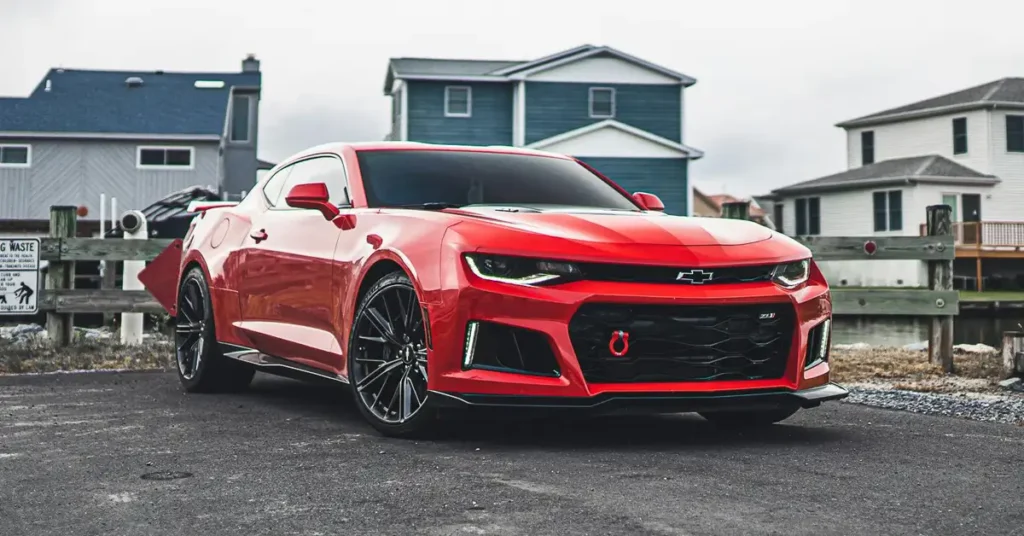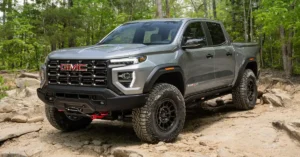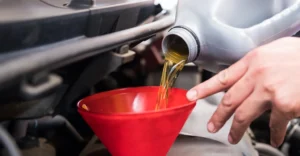Few cars stir up emotion quite like the Chevrolet Camaro. It’s loud, bold, and unapologetically American, with an attitude that turns every drive into an event. But beneath that muscle-car bravado lies a question every enthusiast eventually asks: how reliable is it really? Whether you’re considering a used fifth-generation model or a brand-new sixth-gen powerhouse, knowing what to expect can help you avoid nasty surprises. Let’s lift the hood and see what this modern legend is truly made of.
What You’ll Discover in This Guide
Before we go deep, here’s what this comprehensive guide covers:
- What real-world owners and experts say about Camaro reliability
- The most common problems (and how to fix them)
- The best and worst years to buy
- Preventive maintenance tips to keep your Camaro strong beyond 160,000 km
- How it stacks up against the Ford Mustang and Dodge Challenger
The Camaro’s Reliability Story
The Chevrolet Camaro has always balanced brute strength with innovation. It’s known for features like Magnetic Ride Control, advanced infotainment systems, and potent powertrains that make even a simple commute feel like a track day.
According to J.D. Power, the 2021 Camaro scored an 80 out of 100 for quality and reliability considered average. RepairPal echoes this with a 3.5 out of 5.0 rating, ranking it 21st among midsize cars. That means it isn’t flawless, but when maintained properly, it delivers solid dependability.
Real-world data shows that Camaros can easily cross 160,000 km without major mechanical issues. Their engines and transmissions are strong, but neglecting basic maintenance (like oil changes or fluid flushes) can trigger expensive repairs. Owners who stick to the recommended service intervals often report smooth performance, even after years of spirited driving.
Common Chevrolet Camaro Problems (and How to Fix Them)
Every car has its quirks and the Camaro is no exception. Let’s break down the most commonly reported issues and how you can stay ahead of them.
1. Electrical System Glitches
Many 2014 Camaros developed mysterious electrical faults affecting lights, radios, and even climate controls. These problems often trace back to a failing Body Control Module (BCM), which manages multiple systems.
Fix: Reprogramming or replacing the BCM usually resolves the issue. Always check battery terminals and grounds loose connections can mimic bigger electrical failures.
2. Key Stuck in the Ignition
A frustrating one for some 2014 owners after parking and turning off the car, the key refuses to come out of the ignition.Fix: The problem usually lies in the shifter linkage or ignition lock cylinder. Replacing the faulty component eliminates the issue and restores smooth operation
3. Engine Failure and Timing Chain Wear
The 2010–2012 Camaro V6 engines had a reputation for early timing chain stretch, often caused by irregular oil changes. Once stretched, the chain can throw engine timing off, leading to rough idling, misfires, and even catastrophic engine lock-up.
Fix: Replace the chain at around 120,000 km, and always use high-quality synthetic oil changed every 8,000–10,000 km. Staying ahead of this maintenance prevents long-term damage.
4. Airbag Light Malfunctions
Owners of the 2010 Camaro noticed that airbag warning lights would flicker even when seats were empty. The issue stems from faulty seat sensor mats, which confuse the system.
Fix: Replacing or recalibrating the seat sensor pad typically clears the warning. It’s a simple fix but essential for your safety systems to work correctly.
5. Secondary Air Injection Fault
Older Camaros (1997–2002) are known for clogged air injection check valves, which reduce airflow and trigger the check-engine light.
Fix: Replace both valves, even if only one fails. This restores emission performance and prevents repeat issues.
6. Faulty Radio or Infotainment Display
Some 2013 Camaros experienced blank or flickering infotainment screens. While the radio continued to play, the touchscreen would fail, disabling navigation and controls.
Fix: A software update or replacement of the display module usually solves it. Check for recall updates at a Chevrolet service centre if your system acts up.
The Best and Worst Camaro Years
Here’s a quick breakdown of which Camaro model years you should aim for and which to avoid.
| Generation | Best Years | Worst Years | Notes |
| 5th Gen (2010–2015) | 2015 | 2010–2014 | Early V6s had timing chain and electrical issues. 2015 marked major improvements. |
| 6th Gen (2016–Present) | 2018–2024 | 2016–2017 | Early sixth-gens faced steering and transmission problems. Later models are far more refined. |
Insight:
The 2015 Camaro was the sweet spot of the fifth generation more refined, fewer mechanical gremlins, and improved quality control. From 2018 onward, Chevrolet fine-tuned the formula even further, enhancing gearbox reliability and tech features. If you’re buying used, 2018 or newer is the safest bet for long-term ownership.
Camaro vs. Its Rivals
To understand the Camaro better, it’s worth seeing how it compares to other iconic muscle cars.
| Model | Engine Range | Reliability Rating | Ride & Handling | Annual Maintenance Cost |
| Chevrolet Camaro | 2.0L I4 – 6.2L V8 | 3.5 / 5 | Sharp and balanced | Moderate |
| Ford Mustang | 2.3L I4 – 5.0L V8 | 3.8 / 5 | Sporty, smoother ride | Moderate–High |
| Dodge Challenger | 3.6L V6 – 6.2L V8 | 3.2 / 5 | Powerful, less agile | High |
While the Mustang edges out slightly in reliability and comfort, the Camaro offers sharper cornering and better chassis balance. The Challenger, on the other hand, shines in straight-line power but feels bulkier in tight corners.
Preventive Maintenance Tips
The Camaro rewards those who treat it well. Here’s how to keep it running at its best:
- Oil and filter change: Every 8,000–10,000 km using full synthetic oil
- Transmission fluid replacement: Every 50,000–60,000 km
- Timing chain inspection: Every 100,000 km (especially for 3.6L V6 engines)
- Brake fluid flush: Every two years
- Coolant replacement: Every 60,000 km
- Battery and BCM check: Annually, to prevent electrical issues
- Spark plug replacement: Every 80,000 km
Pro Tip: If you notice flickering lights, erratic shifting, or unusual sounds, don’t delay diagnostics. Most issues are minor if caught early but can spiral into major repairs if ignored.
Why the Camaro Still Deserves Respect
Despite its occasional quirks, the Chevrolet Camaro remains one of the most engaging cars you can drive. It’s fast, agile, and undeniably emotional. Whether you go for the turbocharged 2.0-litre, the muscular 6.2-litre V8, or something in between, the Camaro offers a visceral connection to the road that few cars can match. Its steering precision, chassis balance, and overall attitude make it a car worth owning provided you give it the care it deserves.
FAQs
Q: How long does a Chevrolet Camaro last?
With regular maintenance, expect well over 160,000 km, and many owners reach 240,000 km without major repairs.
Q: Are Camaros expensive to maintain?
Not excessively. Annual upkeep is moderate compared to similar performance cars and comparable to a Ford Mustang.
Q: Which Camaro engine is most reliable?
The 6.2-litre V8 found in SS and ZL1 trims is highly durable, with fewer issues than the early 3.6-litre V6 models.
Q: Should I buy a used Camaro?
Yes but ideally a 2018 or newer model. Avoid early fifth-gen cars unless they have complete maintenance records.
Keep Your Camaro in Peak Condition with MotorHub
In the UAE, where heat, sand, and traffic can challenge any performance car, consistent care is essential. Camaros are particularly sensitive to high temperatures, which can affect cooling systems, air conditioning, and battery performance. That’s why regular inspections and timely servicing make all the difference.
At MotorHub, our certified technicians use advanced diagnostics and genuine parts to keep your Camaro running at its absolute best. Whether it’s a scheduled oil change, A/C tune-up, or performance upgrade, we ensure your car performs like new on every drive.



